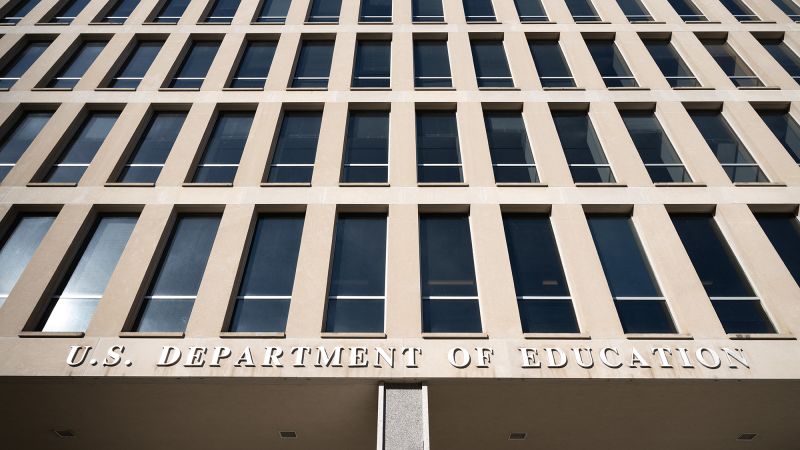In a significant legal dispute, President Donald Trump’s administration recently urged the Supreme Court to alter the composition and leadership of the Department of Education, an agency that has long been a focal point of Trump’s political agenda. The appeal to the Supreme Court came shortly after the Boston-based 1st US Circuit Court of Appeals denied a prior request from the Trump administration to lift a lower court’s order that put a stop to mass employee firings within the department. Established during the Carter administration, the Department of Education has been seen as a vital instrument for federal involvement in public education across the United States.
The emergency appeal to the Supreme Court underscores the Trump administration’s ongoing struggle to rein in the education agency’s authority, a goal that has faced repeated setbacks in lower courts. The argument from the administration hinges on the claim that their actions pertained to “internal management decisions” and consisted of eliminating functions they consider discretionary, suggesting that these roles are more properly suited for state governments rather than being federally administered.
Despite Trump’s vocal campaign promise to dissolve the Department of Education, administration lawyers articulated in their Supreme Court filing that only Congress possesses the authority to terminate the operation of the agency outright. This distinction is paramount as it indicates the administration’s awareness of the legal complexities surrounding the department, and it raises questions about the limits of executive authority over federally established agencies.
The controversy escalated earlier this year when Trump ordered large-scale layoffs within the Department of Education. Courts have ruled consistently that because Congress created the agency, it cannot be disassembled by the executive branch on its own authority. Nevertheless, the administration argues that it retains the power to reorganize the department and reduce its workforce so long as the remaining staff can fulfill the department’s legal responsibilities.
In its recent appeal, the Department of Justice reaffirmed its commitment to maintaining the Department of Education’s operations while reducing its size. They attempted to assure the Supreme Court justices that even though there are plans to restructure, the department will continue to perform its legally mandated duties, which include distributing federal funds to schools, overseeing financial aid for students, and enforcing civil rights in education.
The legal skirmishes took a significant turn when U.S. District Judge Myong Joun, a nominee from President Joe Biden, issued a ruling that halted Trump’s plans to dismiss employees. This ruling mandated the reinstatement of workers who faced termination, highlighting the legal principle that the closure of such a department would require approval from Congress. Joun emphasized that the layoffs proposed by the Trump administration could severely cripple the functioning of the Department of Education, indicating serious implications not only for the agency itself but also for educational policy nationwide.
In the heart of these proceedings, the Supreme Court is also engaged in evaluating a related emergency case that questions the president’s authority to initiate mass layoffs and organizational changes within other federal departments. The stakes are notably high, as the 1st Circuit noted the critical issue at hand: whether the Department of Education, a cabinet agency in operation for nearly fifty years, should be allowed to fulfill its statutory duties or be hindered by mass termination orders aimed at effectively shuttering its operations.
The proposed layoffs threatened to impact approximately half of the department’s workforce, deepening concerns among educators, advocates, and congressional members regarding the future of federal oversight in education. As this legal battle unfolds, the implications of the Supreme Court’s decisions could reverberate across the educational landscape in the United States, shaping the operational framework of the Department of Education for generations to come.



